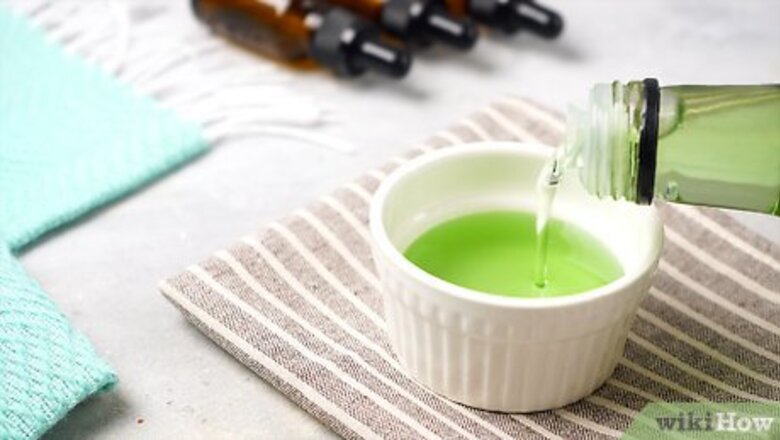
views
Oil Selection
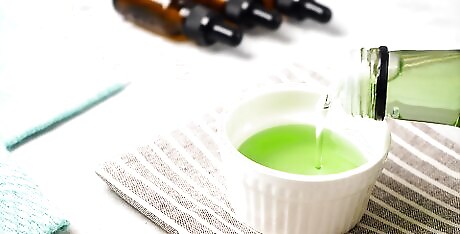
Pick a carrier oil. You must dilute essential oils with a carrier oil before applying them to your skin. Some good fragrance-free options include avocado, sweet almond, jojoba, grapeseed, and apricot kernel oil, but they do need to be refrigerated. Alternatively, pick olive, coconut, argan, or sesame oil as your carrier, all of which are safe for your skin. Choose cold-pressed or organic carrier oils whenever possible. Sweet almond oil smooths the skin, helps combat dehydration and dryness, and even has a pleasant scent. It's a great choice for all skin types. Sunflower oil is very soothing since it contains fatty acids. It's also rich in protective antioxidants, which are excellent for anti-aging. Cold-pressed, unrefined extra virgin olive oil locks in moisture and hydrates your skin. Always do a patch test beforehand. Dab a drop of the oil onto your inner wrist, and wait at least 24 hours to see if there's a reaction.
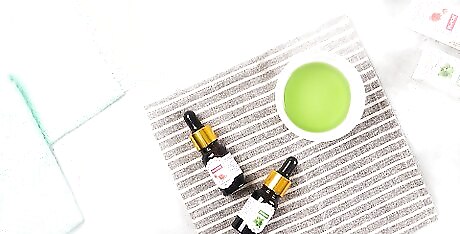
Choose a bright essential oil for the top note. You can make a simple body oil with 1 essential oil and 1 carrier oil. However, many people prefer to make their own customized mixes. To start with, decide on a "top note" for your perfumed body oil. This is a bright or sharp aroma that will grab your attention when you first smell the mixture, but it will not last long. Examples include peppermint, basil, eucalyptus, neroli, and verbena. oils. It’s probably best to avoid using citrus oils, as many can cause severe burns when applied to the skin and exposed to sunlight.
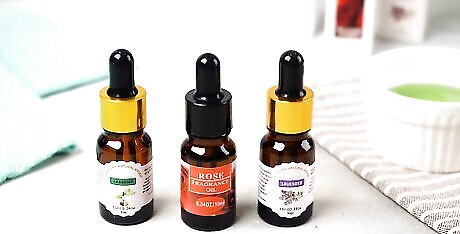
Select a complex scent for the middle note. Also called the heart note, this oil usually has a full-bodied, complex scent that lasts 1-2 hours on a perfume testing strip. You can choose a middle note to serve as the main theme of the scent. Alternatively, pick one that shares elements of the top and base notes so all 3 scents harmonize. Good choices include chamomile, ginger, rose, lavender, geranium, and other herbal and flowery scents.

Opt for a deeper base note. For a classic 3-note mix, the last essential oil you'll need is the base note. This should last at least a few hours, as its main purpose is to give the blend staying power. Many oils used as base notes are also fixatives, which slow down the rate of evaporation of the other scents. Try deep, strong scents such as vanilla, cocoa, sandalwood, patchouli, or frankincense.
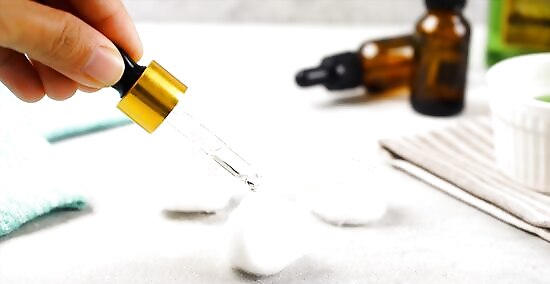
Tweak your combination as needed. Once you've made your 3 choices, put a couple of drops of each on a cotton round, and waft the scent toward you for a test. If you're not a fan, swap out one or more oils with a different scent.
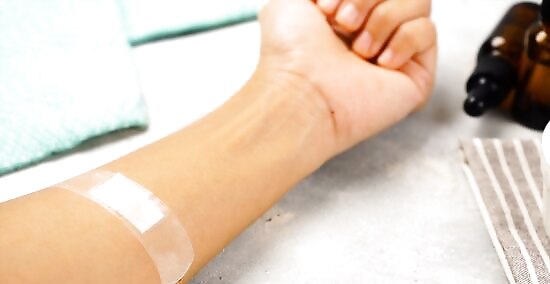
Do a patch test to make sure you don’t have a bad reaction. If you haven't applied 1 or more of your chosen essential oils to your skin before, do a patch test. This is especially important if you are taking medication or if you have known allergies. Use this procedure: Dilute your essential oils in a carrier oil to twice the concentration you plan to use. For instance, if you plan to use a 3% mixture, dilute it to 6% for the test, which would be 6 drops of the essential oils in 1 teaspoon (4.9 mL) of the carrier oil. Wet the inside of a bandage with the mixture and place on your inner arm. Remove the bandage after 48 hours. If there is any redness or itchiness, do not use that oil.
Body Oil Mixture
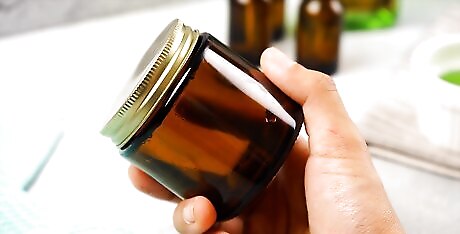
Use small, dark glass bottles to store your oil. Sunlight and air break down oils over time. Store your oils in bottles made from dark, semi-opaque glass, the size of a small perfume bottle. The small size lets you work with quantities that you can use up before they break down while minimizing headspace (air inside the bottle) that speeds up decay. Use bottles with a tight cap or cork.
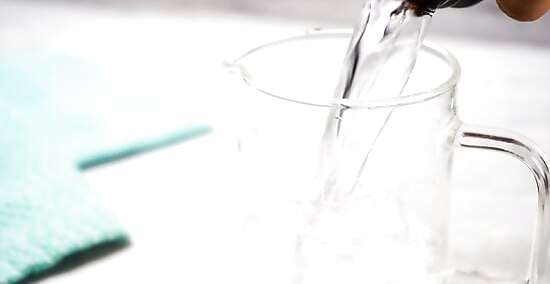
Measure the size of your bottle. Fill your bottle with water nearly to the top, then pour it into a measuring cup. Write down the number of milliliters the bottle holds. Multiply this number by 20 to get an estimate of the number of drops that fit in the bottle. For example, if you plan to make a large batch of 50 mL, your bottle holds 50 mL x 20 drops/mL = 1,000 drops. For reference, 1 US fluid ounce is close to 30 mL.
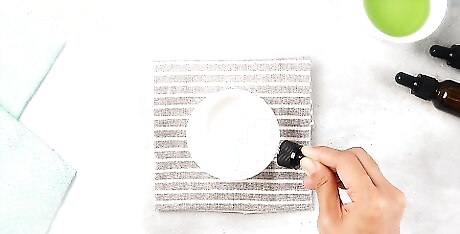
Dilute the essential oils to 1-5% for safety. If you're an adult that plans to use the body oil across a large area of your body, dilute the essential oil to 1%. If you plan to use it as a perfume or for a small area, you can safely try 3 or 5%. For a 1% dilution, multiply the number of drops your bottle holds by 0.01. For example, if you have a 1,000-drop bottle and plan to dilute to 1%, you'll need 1000 x 0.01 = 10 total drops of essential oil. Expensive essential oils are often sold in diluted form to make them affordable. If the label says it's already 5% diluted, multiply the number of drops by 20 (since 100% ÷ 5% = 20%).

Use 2 parts of the base note, 1 part of the middle note, and 2 parts of the top note. This ratio uses 5 "parts" total (2 + 1 + 2). If you’re making a 1% essential oil mixture in a 50-mL bottle, you’ll need 10 total drops of essential oil, or 2 drops per part (because 10 drops ÷ 5 parts = 2 drops per part). Here’s how to divide that up between the 3 scents: 2 parts base note x 2 drops/part = 4 drops base note. 1 part middle note x 2 drops/part = 2 drops middle note. 2 parts top note x 2 drops/part = 4 drops top note. Sometimes the math doesn't work out neatly, and you can't get a perfect ratio. Just get as close as you can. This isn't the only recipe you can use. If you want your middle note to be the centerpiece, you can go as high as a 1:3:1 ratio.
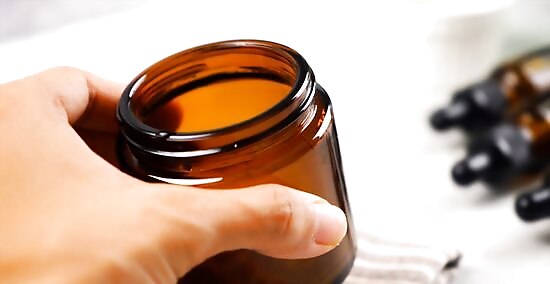
Mix together your essential oils in the bottle. Count out the drops of each essential oil according to the calculations you just did. Add these all to a glass bottle, and swirl it around so they mix together.
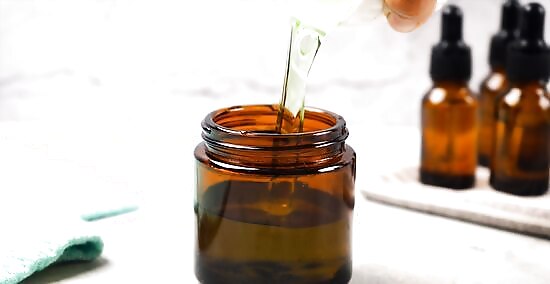
Fill the rest of the bottle with your carrier oil. Since all that math was based on the size of the bottle, you don't need to count out the drops. Just fill the bottle up with carrier oil as full as you can. Close the lid tightly and shake for a minute or 2 to make sure the oils are spread evenly throughout. At this stage, you can smell the oil and mix in another drop or 2 of essential oil to change the characteristics. Just remember that adding too much can increase the concentration to levels that irritate the skin.
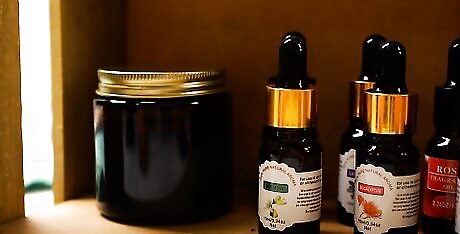
Store the bottle in a cool, dark place. Seal the bottle tightly and place it in a box or on a shelf away from direct sunlight. If you’re using a carrier oil that needs to be refrigerated, pop the bottle in the fridge. To maximize the shelf life, transfer the oil into smaller bottles as you use it so there is never much air trapped in the bottle. Keep it out of reach of children. Use the oil within 1 year. Discard the oil sooner if it smells very different than it did fresh, if it thickens, or if it turns cloudy. If you keep your body oil in the fridge, let it warm up on the counter for a few hours so it comes to room temperature before you use it.




















Comments
0 comment